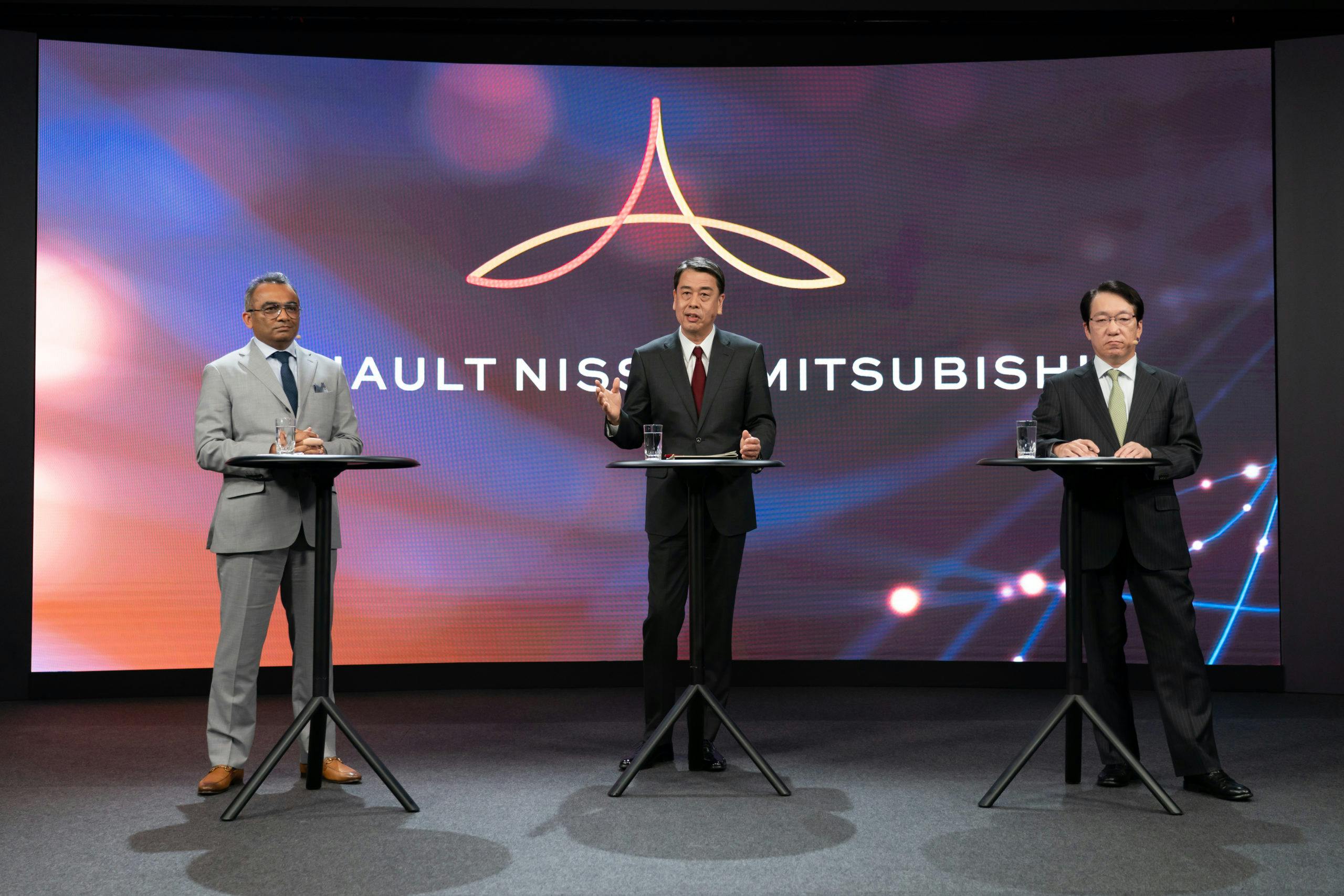The Renault Nissan Mitsubishi Alliance has announced its strategy toward full electrification by 2030. It will focus on the mobility value chain by expanding its platform sharing, which will expand to 80 percent (from 60 percent) in 2026 throughout the 90 models across all brands. According to the alliance, this will allow each member to focus on what customers want, improve their best models and emphasize their core markets while introducing innovations at a lower cost. Two new Mitsubishi vehicles are coming as a follow-up to the Outlander but will be introduced in Europe first. One of those will be the next-generation Outlander Sport or ASX as it’s known in other markets.
By 2030, the Renault Nissan Mitsubishi Alliance will introduce 35 new battery-electric vehicles between its three brands. To support this, five platforms will form the basis of the models and will be part of the additional €23 billion ($25.6 billion) investment in electrification. The architectures will underpin 90 percent of the vehicles being introduced and will cover most major markets and regions. The core platform will be CMF-EV, which is already being used by the Nissan Ariya and Renault Mégane E-Tech. This modular architecture will eventually underpin over 15 new vehicles across all brands by 2030.
In 2024, the CMF-EV platform will be followed by the CMF-BEV, which the alliance says is the most competitive compact platform in the world. Nissan will be the first to use this on the successor to the Micra, which will be built in France. The CMF-BEV provides vehicles with a range of up to 400 km or 248 miles per charge thanks to its superior aerodynamic performance reducing cost by 33 percent and power consumption by over 10 percent versus a current-generation Renault Zoe. Nissan, Renault, and Alpine will utilize this platform extensively, forming the building blocks for over 250,000 vehicles per year between the three brands. The new Renault R5 will follow the Nissan Micra successor as the next CMF-BEV-based vehicle.
In addition to CMF-EV and CMF-BEV, the alliance will have three additional platforms. The CMF-AEV will be the most affordable architecture in the world and will be the basis for the new Dacia Spring and other price-sensitive vehicles for markets with high demand for low-cost models. KEI-EV has been dedicated to the super tiny Kei carsfor the Japanese market and will likely be used extensively by Nissan and Mitsubishi. Finally, the LCV-EV Family has been developed specifically for commercial vehicles and serves as the base for the Renault Kangoo and Nissan Town Star.
Along with the new vehicles, the alliance is working with its partners to scale battery costs and reduce them by 50 percent in 2026 and 65 percent by 2028. By 2030, the three members will have a total battery production capacity of 220 GWh across all of its sites. The alliance is also working on solid-state battery technology with Nissan leading the development. Versus existing lithium-ion batteries, solid-state batteries have double the energy density and shorter charging times, improving convenience during long trips. The goal is to put solid-state batteries in mass production by 2028 and work to realize cost parity with internal combustion vehicles beyond that by bringing costs down to $65 per kWh. The Alliance has also chosen to control the hardware and software to improve its battery management system. This allows the three members to gather predictive data to do everything from monitoring the battery’s state of health and make improvements to the technology.
Renault Nissan Mitsubishi Alliance is also doubling down on driver assistance and autonomous technology. Leveraging 20 years of experience, the members expect to have over 10 million vehicles equipped with autonomous driving systems across 45 different models by 2026. Today, about 3 million vehicles are connected to the Alliance Cloud. That’s projected to expand to 5 million per year by 2026 with 25 million cars on the road. The alliance will also introduce Google ecosystems into its vehicles.
Renault will take the lead in the development of a common centralized electrical and electronic architecture. This will bring together electronic hardware and software applications so that they can offer optimum performance and maximize overall benefits. The alliance is expected to launch its first fully software-defined vehicle by 2025, which will get over-the-air (OTA) updates over its life cycle. That will improve the car’s value because it will now be integrated into the digital ecosystem to offer a more personalized experience, provide enhanced services, reduce maintenance costs, and improve resale values. Software-defined vehicles will have the ability to communicate with connected objects, users, infrastructures.
Most of what was announced by the alliance expand on Nissan’s Ambition 2030 initiative. This gives us a broader look at how it fits as part of the bigger picture now that the five key architectures have been announced. With eight of those vehicles being EVs, the ones that will be sold in major global markets will be on the CMF-EV or CMF-BEV platform. The latter architecture, however, will likely be for vehicles targeted at markets like Japan and Europe where small vehicles are still in high demand.

